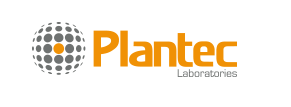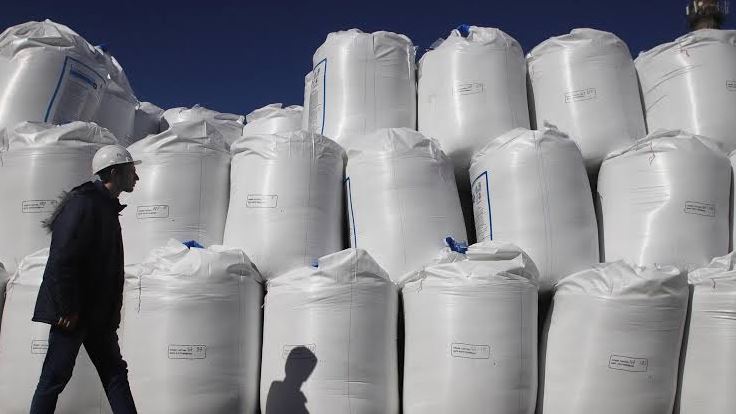Brazil-Russia Trade Reached Records and Fertilizers Reached 34%
Brazil
Ministry of Agriculture published approval of 20 equivalent technical product registrations. (MAPA)
In compliance with a court decision, Anvisa approved the toxicological evaluations of trifloxystrobin 375 + cyproconazole 160 g/L SC, indoxacarb 170 + methoxyfenozide 330 g/L SC, chlorothalonil 540 + picoxystrobin 33 + tebuconazole 60 g/kg WG from Rainbow; S-metolachlor 979.6 g/L EC from Lemma; S-metolachlor 290 + atrazine 200 + mesotrione 40 g/L SE from Globachem; and glyphosate 792.5 g/kg WG from AllierBrasil. (Anvisa)
The use of entomopathogenic fungi to control the corn leafhopper (Dalbulus maidis) has emerged as an effective strategy in integrated pest management. According to Fábio Cruz da Silva, an agricultural engineer at JCO Bioprodutos, the most commonly used fungi are Beauveria bassiana, Metarhizium anisopliae and Isaria fumosorosea, which have demonstrated good performance in controlling the leafhopper and, consequently, have resulted in preventing corn stunt. (JCO Bioprodutos)
In 2024, bilateral trade between Brazil and Russia reached a historic record of US$ 12.4 billion (an increase of 9% compared to 2023). Fertilizers and chemical fertilizers accounted for 34% of Brazilian imports of Russian products. (Government of Brazil)
From January to February of 2025, fertilizer deliveries grew by 7.7% compared to the same period in 2024, totaling 7.07 million tonnes. In February alone, 3.38 million tonnes of fertilizers were delivered, an increase of 17.7% compared to the previous year. The data was compiled by the National Association for the Diffusion of Fertilizers. (ANDA)
For Minister Dias Toffoli, there was no socio-environmental setback after the conclusion of Direct Action of Unconstitutionality 6955. According to him, Law No. 15671/2021 of the State of Rio Grande do Sul, which allows the commercialization of imported pesticides even without authorization for use in the country of origin, only harmonizes State legislation with Federal standards, which already regulate the use of pesticides. (STF)
Beekeepers in Boa Esperança, State of Espírito Santo, have reported a high mortality rate among bees. The Espírito Santo Institute of Agricultural and Forestry Defense carried out an inspection at the site. One of the suspicions raised by the agency is the possibility of insect poisoning by pesticides. (IDAF)
The Brazilian Agriculture and Livestock Confederation held the first meeting of the Working Group on the Regulation of the Bioinputs Law No. 15070/2024. “The new regulatory framework provides legal certainty for farmers who produce their own bioinputs, an alternative that promotes the adoption and expansion of sustainable agricultural production”, said technical advisor Letícia Fonseca. (CNA)
Biosphera, a biologics company based in Londrina, State of Paraná, has announced new investments in R&D. More than US$ 350 thousand per year will be invested to develop new products based on 25 strains of bacteria, fungi and viruses that are being studied by the company. (Biosphera)
3tentos reported a net revenue of US$ 620 million and a 31% growth in 1Q2025. The inputs segment showed an increase in volume across all products. During the 1Q2025, the company made a strong contribution to the sale of inputs in the State of Mato Grosso, especially for the second corn crop. On the other hand, the State of Rio Grande do Sul went through a period of drought in the quarter, reducing the sale of pesticides. (3tentos)
ICL has launched a digital tool for plant nutritional analysis, developed in partnership with the startup Spectral Solutions. The technology uses spectroscopy to analyze macro and micronutrients in plant leaves in real time. The software compares the data obtained with agronomic parameters and classifies nutrients into three levels: deficient, adequate or excessive. “To achieve this, we invested US$ 1.42 million. We aim to expand the use of this tool throughout Brazil and, in the future, take this technology to international markets”, according to João Pascoalino, digital services manager. (ICL Group)
Regarding projections for total fertilizer deliveries in 2025, Jeferson Souza, market analyst at Agrinvest Commodities, said that the expectation is that Brazil could exceed 46 million tonnes, even with higher prices. “One of the factors that support this projection is the lower concentration of nutrients per tonne of product sold. There is significant growth in the use of fertilizers such as ammonium sulfate, simple superphosphate and ‘NP’ formulas, which increases the actual amount applied to crops”. (Agrinvest Commodities)
According to Nutrien, favorable margins and the possibility of increasing the area planted with soybeans should sustain the high Brazilian demand for agricultural inputs in the 2H of 2025. (Nutrien Soluções Agrícolas)
Unigel subsidiary Proquigel has approved an agreement that provides for the resumption of operations at two nitrogen fertilizer plants in the Northeast by Petrobras. The agreement ends contractual disputes and litigation between the parties. Petrobras said its board of directors ratified the decision, authorizing the execution of the agreement, with a deadline for signature by May 31st. (Unigel)
Lar agricultural cooperative is expected to take over management of 19 stores in Syngenta’s Atua Agro chain. Carried out through the Synap commercial platform, the operation – subject to the Government’s approval – seeks to expand access to the multinational’s products for farmers in the States of Paraná and Santa Catarina. “We see a lot of strategic complementarities between Syngenta and Lar”, according to André Savino, president of Syngenta Crop Protection in Brazil. (Syngenta)
Scenario of caterpillar infestation in corn and cotton crops in the States of Mato Grosso, Mato Grosso do Sul and Goiás is “chaotic”, according to researcher Germison Tomquelski, who points out flaws in the efficiency of insecticides, including in the case of premium molecules. According to him, chemical control, which previously guaranteed more than 80% effectiveness, now requires additional applications and the use of mixtures with biologicals. The extra cost of insecticides in corn can reach 10% just for caterpillar control, without taking other pests into account. (Desafios Agro)
From January to March of 2025, the area treated with pesticides in Brazil grew 1.8% when compared to the same period in 2024, reaching more than 831 million hectares. The volume of products applied to control pests, diseases and weeds increased 3.4% in the 1Q2025. Distribution by category was: herbicides (42%), insecticides (28%), fungicides (22%), seed treatment (1%) and others, such as adjuvants, growth regulators and inoculants (7%). (Sindiveg)
The Attorney General’s Office sent a favorable opinion to the Supreme Federal Court to maintain, in the State of Ceará, the State Law 19135/24, which allows the use of drones to manage crops in the State. For the AGU, in addition to the technological advancement for the farms, the use of drones can improve the precision of pesticide application and significantly reduce the environmental impact and human exposure to these substances. (AGU)
Researchers from the Faculty of Mechanical Engineering at the Federal University of Uberlândia have developed a new propeller agitation system for pesticide sprayers that can increase the efficiency of these devices. (Femec/UFU)
Government of the State of Mato Grosso has approved a law that makes the rules for the application of agricultural pesticides in the state more flexible. The new legislation establishes different minimum distances for the land application of these products, according to the size of rural properties. (Government of Mato Grosso)
Target spot (Corynespora cassiicola) and cercospora leaf spot (Cercospora kikuchii) have emerged as the most severe diseases in soybean crops in the State of Mato Grosso for the second year in a row, even surpassing grain rot. This is the conclusion reached by researcher Luana Belufi, coordinator of Phytopathology at the Rio Verde Foundation. (Rio Verde Foundation)
Mosaic stated that demand for fertilizers remains strong despite an international scenario marked by trade conflicts and tariff tensions. The company highlighted its positive performance in Brazil and projects a 15% growth in sales throughout 2025. (The Mosaic Company)
Sales of inoculants are expected to increase by 12.4% in 2025, compared to 2024, according to estimates from the National Association for the Promotion and Innovation of the Biological Industry. In 2024, sales of inoculants reached US$ 92.61 million, an increase of 10.5% when compared to 2023. Regarding deliveries, the volume was 18.3 million liters, or 206 million doses, an increase of 28.1% when compared to 2023, when 148 million doses were delivered. The increase in the values and number of deliveries of biological inoculants suggests greater diversification in the strategies adopted by farmers to ensure better yields and resilience for their crops. (ANPII Bio; Scot Consultoria)
Gabriela Uliana takes on the role of Regulatory Affairs Coordinator at the Brazilian Association of Phytosanitary Product Companies. (Aenda)
Researcher Mariangela Hungria, from Embrapa’s Soybean Unit, is ranked first in Plant Sciences and Agronomy and second in Microbiology in Research.com’s list of the best Brazilian scientists in 2025. (Embrapa)

Latin America
Corteva ended 1Q2025 with a net income of US$ 667 million, up 77% when compared to the same period in 2024. In the seeds division, revenue fell 2%, reaching US$ 2.71 billion. Volume grew 2% in North America, but declined in Latin America, where corn planted area shrank in Argentina. The appreciation of the dollar negatively impacted results in several regions. (Corteva Agriscience)
According to Roberto Rotondaro, president of the Fertilizar Civil Association, the three crops that use the most fertilizers in Argentina are corn, wheat and soybeans. “Corn and wheat have been competing… but corn has come out on top in recent years, mainly due to the increase of planted area, which has made corn the crop that uses the most fertilizers in Argentina today”. Regarding biostimulants, he said that they have grown 8% in the last five years, and biofertilizers have grown 25%. “In the case of granulated fertilizers, there has also been a very significant increase of 89% in these five years. And there was an increase of 72% for slow-release fertilizers.” (Fertilizar – Asociación Civil)
CampoLimpio Association, which is responsible for Argentina’s empty pesticide packages management system, achieved a 33% higher recovery rate during 1Q25 compared to the same period in 2024. (CampoLimpio)
Researchers at the National University of the Center of the Province of Buenos Aires, Argentina, have confirmed the world’s first case of resistance of Brassica rapa (turnip) to the herbicide flurochloridone, which adds to the resistances already registered to glyphosate, ALS and 2,4-D since 2018; the resistant biotype compromises management in crops such as wheat, barley, sunflower and corn, being found in up to 100% of the areas surveyed in the southeast and center of Buenos Aires. (Unicen; Aapresid)
Ecuador’s Ministry of Agriculture has determined that herbicide-tolerant rice cultivars (HT1 and HT3) from the company Cibus are equivalent to varieties developed through conventional breeding and are subject to the same regulations. The rice was developed without the introduction of a gene from another species, meaning it is not transgenic. (Cibus)
In Uruguay, the main buyers have already secured stocks of fertilizers for the winter, and the window for soil correction is underway, with high demand coming from agriculture, livestock and milk production, according to Alberto Cruces of Zambrano & Cía. (Zambrano & Cía)

READ MORE:

